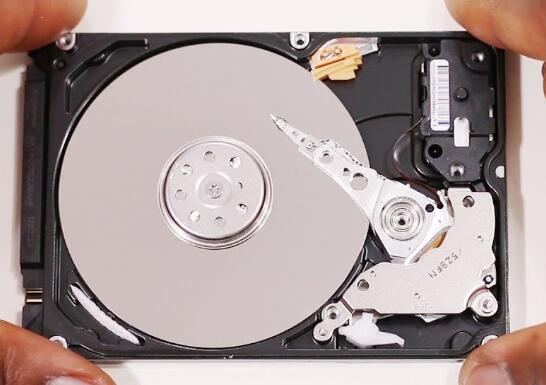External hard drives are invaluable tools for storing and backing up important data. They offer portability, ample storage space, and ease of use, making them a popular choice for personal and professional data management. However, they are also susceptible to physical damage, especially when subjected to drops or impacts. When an external hard drive is dropped and stops working, it can be a distressing experience.
External hard drives are complex devices with delicate components, including hard drive platters, read/write heads, and a circuit board. When dropped, the following components can be affected:
Hard Drive Platters: These are the disks inside the drive that store data. A drop can cause them to become misaligned or damaged, leading to data loss.
Read/Write Heads: These heads float above the platters and are responsible for reading and writing data. A drop can cause them to crash into the platters or become misaligned, causing mechanical failures.

Circuit Board: This component controls the drive’s operations. Physical damage to the circuit board can disrupt the drive’s functionality and make it unrecognizable to your computer.
Immediate Steps to Take After Dropping Your External Hard Drive
Stop Using the Drive: Continuing to use a damaged drive can exacerbate the problem. Disconnect the drive from your computer immediately to prevent further damage.
Inspect the Drive: Check for any visible signs of physical damage, such as cracks, dents, or unusual noises when the drive is powered on. This can give you an idea of the extent of the damage.
Avoid Opening the Drive: Unless you have the expertise, avoid opening the drive yourself. Hard drives are sensitive devices, and improper handling can lead to further damage.
Diagnosing the Problem
To assess the extent of the damage, you can perform a few diagnostic steps:
Listen for Unusual Noises: Power on the drive and listen for any unusual sounds, such as clicking, grinding, or whirring. These noises can indicate mechanical failure.
Check for Detection: Connect the drive to your computer and see if it is recognized. If the drive is not detected, it could be a sign of serious internal damage.
Run Diagnostic Software: Some software tools can help diagnose issues with external hard drives. These tools can provide information about the drive’s health and detect potential problems.
Data Recovery Options
If your external hard drive is damaged, data recovery is possible through various methods:
Software-Based Recovery: If the drive is still recognized by your computer but has file system errors or corruption, data recovery software can help retrieve your files. Popular software includes Recuva, EaseUS Data Recovery Wizard, and Stellar Data Recovery.
Professional Data Recovery Services: For more severe damage, especially mechanical failures, professional data recovery services are recommended. These services have specialized equipment and expertise to recover data from damaged drives. Companies like DriveSavers, Ontrack, and Gillware offer such services.
DIY Repair Kits: For those with technical expertise, DIY repair kits can be used to attempt basic repairs, such as replacing a damaged PCB. However, this is a high-risk approach and should only be undertaken if you are confident in your technical skills.
Preventive Measures for Future Protection
To avoid future data loss from physical damage, consider the following preventive measures:
Use a Protective Case: Invest in a sturdy, shock-resistant case for your external hard drive to protect it from accidental drops and impacts.
Regular Backups: Maintain regular backups of your important data using multiple storage solutions, such as cloud storage or additional external drives. This ensures that even if one drive fails, you have other copies of your data.
Handle with Care: Be mindful of how you handle and transport your external hard drive. Avoid placing it in high-risk areas where it could easily fall or be subjected to impact.
Monitor Drive Health: Regularly check the health of your external hard drive using diagnostic tools. This can help you identify potential issues before they lead to data loss.
About us and this blog
Panda Assistant is built on the latest data recovery algorithms, ensuring that no file is too damaged, too lost, or too corrupted to be recovered.
Request a free quote
We believe that data recovery shouldn’t be a daunting task. That’s why we’ve designed Panda Assistant to be as easy to use as it is powerful. With a few clicks, you can initiate a scan, preview recoverable files, and restore your data all within a matter of minutes.
Subscribe to our newsletter!
More from our blog
See all postsRecent Posts
- Recovery ssd upgrade failed exagrid error 2025-04-03
- Smart hard disk error 301 2025-04-03
- Error code 36 external hard drive 2025-04-03










